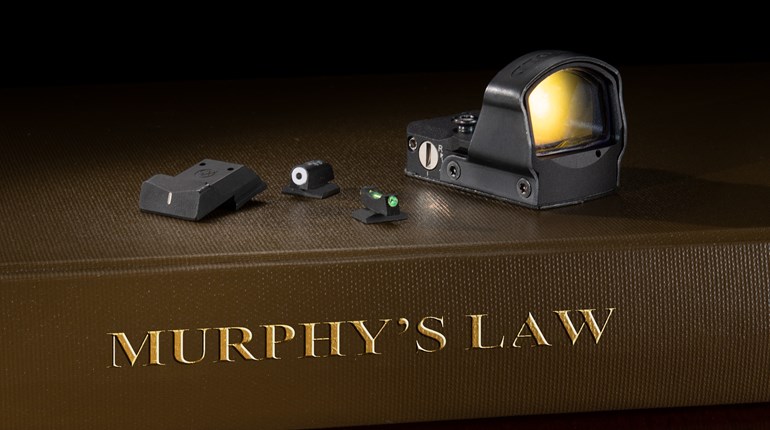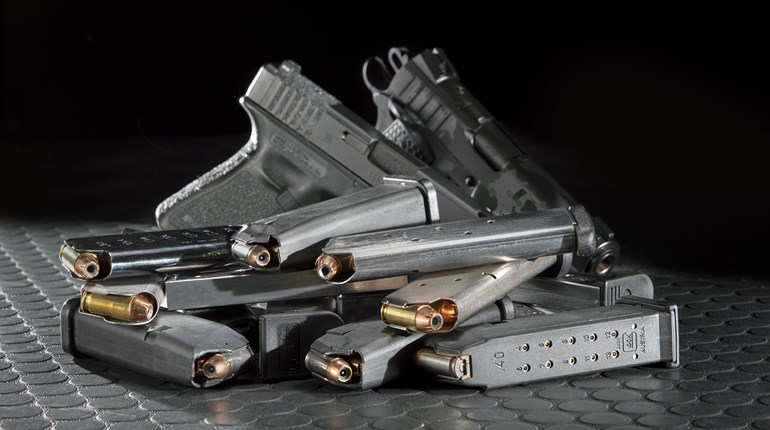
Like most folks, there was a time when I was younger and dumber. As evidence of my dumbness in that time of youngness, I managed to get myself into a minor disagreement with the late, great firearms trainer Pat Rogers on an internet forum.
Now, understand that I own and love a Professional Model from the Springfield Armory Custom Shop, and have had it for many years, decades even, at this point. But, back in that time, I was still new to PC9111 ownership. Furthermore, that was about the time of peak interest in the Springfield Pro; wait times for new guns were close to a year, if not more. You could literally take delivery on one at retail and turn around and sell it at a profit, such are the mechanics of supply and demand. It was the new hotness—a very expensive, very limited-production pistol designed for the FBI’s SWAT teams.
Anyway, long story short, there was a discussion about “ULTIMATE 1911!” pistols or somesuch. I think maybe the thread involved pistols for USMC Det One or something. Like a partisan of my favorite, very expensive, cool go-fast 1911, I was all in on the idea of just having the Devil Dogs pile in on the existing federal contract for my beloved Springfield Pro.
Rogers demurred, stating that while he loved pretty much everything about the Professional Model, its 20-lpi checkering was a little over the top, and its abrasive nature interfered with both high-round count training workups for professionals as well as 1,000-round weekend classes for private citizens.
I clapped back at him, pointing out that I wasn’t a ninja and so was unlikely to shoot a whole bunch of bullets in one day, and even if I were, I had an early Clackamas Kimber that was set up with controls and sights identical to my Springfield Pro, albeit with a smooth frontstrap.
Surely, gentle reader, you can see my comeuppance was on the horizon?
Only a few years later, I had relocated to Indiana and found myself in a three-day pistol class with the esteemed Louis Awerbuck at the Boone County Sheriff’s Office range. Over the intervening years I had sold off most of my 1911-pattern pistols, but I still had my primary carry pistol, the Springfield Professional with its 20-lpi checkering on the frontstrap and mainspring housing, and for a backup I had an old Colt Government Model—with 20-lpi checkering on the frontstrap and mainspring housing. After three days of getting schooled by Awerbuck, I was wrapping my fingers with moleskin and medical tape and ruefully admitting that Uncle Pat was right.
With 1911s, a traditional mark of a true custom gun was sharp, hand-cut checkering. First, you check the overrun areas for the distinctive marks of machine-cut checkering, and then you break out the loupe and scrutinize the rows and rows of tiny, perfect, sharp pyramids. If they took the time to do the checkering right, it was considered a good omen for the rest of the pistol.
The downside of this is that even slightly less aggressive checkering is still pretty aggressive. I have taken a two-day class with the late Todd Green using a custom 1911 with finer, less aggressive 30-lpi checkering. In that class we burned up 1,000 rounds of ammunition in 16 hours. By the end of those two days, I had two fingers on my strong hand taped up to stanch the bleeding.
An actual pistol fight generally requires one draw from the holster at speed. A match might require eight or 10. A high-round-count weekend class or intense competition practice schedule might require 100 or more. It’s an artificial environment. Custom gunmakers who cater to the audience that will use their products in these situations are aware of this.
While it’s easy to attribute the various texturing patterns—Ed Brown’s “Snakeskin” or “X-TAC” offered by Wilson Combat—used by 1911 manufacturers and custom builders as a way to distinguish their pistols from competitors via a visually distinctive treatment on the pistol’s frontstrap, it’s equally plausible to postulate that there’s a quest among high-end 1911 makers to find a grip texture that works without drawing blood. When you look at the patterns currently offered by so many manufacturers, it’s clear that occasionally brand identity trumps practicality.
The polymer gunmakers aren’t off the hook here, either. When you look at the earliest polymer-frame pistol manufacturers, they seem practically unconcerned with the actual interface of their firearms with the paws of the people who would hold them.
Original Glock pistols have a moderately textured “pebble grip” that was grippy only when compared to a bar of soap sliding around the bottom of a cloudy tub. The least little bit of sweat and sunscreen on your paws, and the Gen1 and Gen2 variations of the Austrian handgun got slippery in a hurry. The finger grooves and thumb divots on the Gen3 Glocks were only a slight improvement over the company’s original grip frames.
An entire cottage industry has sprung up around reshaping and retexturing the grip frames of Glocks and other polymer pistols. Probably the original was Robar, way back in the 1990s. One of my most prized pistols is an old Gen2 Glock G17 with a five-digit serial number and the full Robar treatment on the frame and slide. Now, there are numerous companies still carrying that torch and tuning up the grippiness of Glock and SIG Sauer P320 frames, from old school ’smitheries like Wilson Combat and Gray Guns to newer polymer perfecters like Boresight Solutions, Bowie Tactical Concepts and Zev Tech.
More importantly, the makers of polymer pistols—the dominant type of duty/carry guns in this era—are obviously on the same page. The Gen5 Glock is in less need of texturing than any previous model that didn’t have “RTF” in the model designation. Smith & Wesson’s M2.0 generation of its M&P series is really quite good, too. Finally, the “Edge” series guns from FN America, the long-slide LS Edge and compensated CC Edge, have now introduced grip texturing as good (or better) than I’ve paid for from some aftermarket vendors.
Even better, I’ve run the FN LS Edge in a two-day class with Scott Jedlinski of Modern Samurai Project, and even though it locked into my paws like a checkered 1911, I didn’t need a single bandage, despite a crazy number of draws from the holster in a weekend.
Huh. Maybe I’ve found something I really like about polymer versus traditional metal?




































